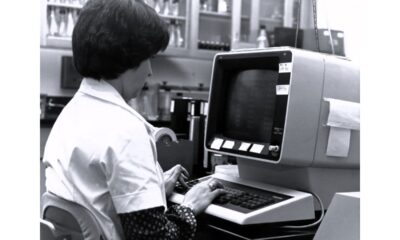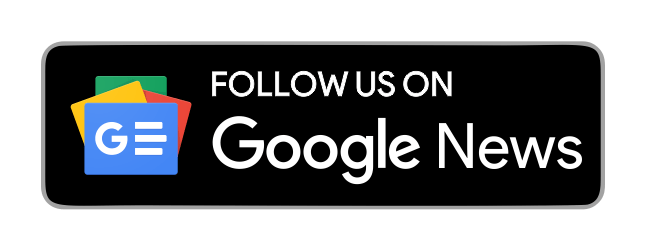Health
Erika Mackinnon: How Client Relationship Management Impacts Long-Term Revenue in Healthcare

In today’s rapidly evolving healthcare environment, building lasting relationships with patients is more critical than ever. Client Relationship Management (CRM) tools have emerged as vital systems that extend beyond clinical documentation, focusing instead on creating personalized, continuous engagement with patients.
By leveraging CRM, healthcare providers can anticipate patient needs, deliver tailored experiences, and foster trust, ultimately driving better outcomes and organizational growth. Erika Mackinnon knows these platforms not only enhance communication and satisfaction but also streamline operations, reduce costs, and support preventive care efforts. As healthcare becomes increasingly consumer-driven, the strategic use of CRM is no longer optional—it’s essential.
The following explores how CRM is transforming the healthcare landscape across patient engagement, trust, personalization, efficiency, and long-term care strategies.
Defining Client Relationship Management in Healthcare
Client Relationship Management (CRM) in healthcare refers to the strategic use of tools and processes that support meaningful communication and engagement with patients throughout their care journey. While traditional systems often focus on clinical records and episodic interactions, CRM platforms emphasize ongoing relationships, enabling providers to anticipate needs and tailor interactions based on individual preferences and history.
Healthcare organizations use CRM technologies to manage patient communications, monitor appointment histories, and track service feedback. A dental practice might use CRM software to send personalized reminders and follow-ups, while a primary care network may rely on it to segment patient groups for targeted wellness campaigns. This approach shifts the focus from reactive care to a more patient-centric experience. Additionally, CRM systems can integrate with wearable devices and health apps, reinforcing continuity and engagement beyond the clinic walls.
Building Patient Trust and Increasing Retention
Trust is the foundation of any lasting patient-provider relationship. When individuals feel heard, respected, and valued, they are more likely to return for future care and recommend services to others. CRM systems support this by enabling personalized communication that acknowledges patient history, preferences, and concerns, fostering a sense of continuity and familiarity. The ability to store and recall previous interactions ensures that patients aren’t repeating themselves, which enhances the sense of being genuinely cared for.
A specialty clinic that remembers a patient’s communication preferences and follows up after procedures often sees patients return for ongoing care. This loyalty leads to increased visit frequency and a higher likelihood of that patient engaging with other services offered by the provider, directly contributing to revenue growth. In competitive healthcare markets, patients who feel well-cared for are less likely to switch providers.
Personalizing Care Through Data and Insights
By organizing and analyzing patient data, CRM platforms empower providers to deliver more relevant and timely care. Whether it’s tailoring content in wellness outreach or adjusting appointment timing based on past behavior, this level of attention helps patients feel seen beyond their symptoms.
A pediatric group that uses CRM insights to identify seasonal health trends among its patients might proactively send health tips and alerts to parents, increasing engagement and reducing unnecessary visits. This kind of targeted interaction keeps patients involved in their own care, which in turn strengthens their connection to the practice. Over time, consistent personalization helps stabilize revenue by increasing the lifetime value of each patient. The ability to segment patient populations based on health risks or preferences also allows for more effective health education and intervention strategies.
Operational Efficiency and Cost Management Benefits
Implementing CRM systems in healthcare settings often leads to smoother workflows and reduced administrative burden. When tasks like scheduling, billing, and follow-ups are automated or streamlined, staff can focus more time on patient care rather than repetitive clerical work. This shift not only improves morale but also reduces costly errors. In environments where patient flow is high, even small improvements in efficiency can yield substantial savings.
A multi-location urgent care center that integrates CRM with its scheduling system might see a significant drop in appointment no-shows and better resource allocation. These efficiencies directly influence the bottom line, helping facilities lower operational costs while maintaining high-quality service. Moreover, CRM analytics can help managers identify bottlenecks or underutilized resources, enabling smarter staffing and budgeting decisions that further optimize cost control.
Supporting Preventive Care and Long-Term Health Outcomes
CRM-driven communication allows providers to stay connected with patients between visits, encouraging healthier behaviors and timely screenings. Instead of waiting for symptoms to escalate, healthcare organizations can use CRM tools to nudge patients toward preventive steps like vaccines, annual checkups, or lifestyle adjustments.
A women’s health clinic that tracks patient milestones through CRM may send reminders for mammograms or prenatal care, increasing adherence to recommended guidelines. This proactive outreach contributes not only to better clinical outcomes but also reduces the financial strain associated with late-stage interventions. Over time, healthier patient populations translate to fewer emergency visits and more predictable revenue streams. Additionally, engaging patients in their preventive care journey fosters a culture of wellness that benefits providers, payers, and communities alike.
Measuring Performance and Addressing Challenges
To gauge the success of CRM initiatives, healthcare leaders rely on metrics such as patient retention rates, revenue per encounter, and overall satisfaction scores. These indicators help organizations refine their strategies and justify continued investment in relationship management tools.
However, implementation doesn’t come without hurdles. Some practices struggle with staff adoption or integrating CRM platforms with legacy systems. A regional health network might overcome resistance by offering hands-on training and demonstrating early wins in patient engagement. Adapting CRM strategies to fit the culture and scale of an organization is essential to realizing long-term value. Continuous evaluation and feedback loops ensure that improvements remain aligned with both patient needs and business goals.
-

 Business2 weeks ago
Business2 weeks agoRandy NG: Inside the Process of Managing End-to-End International Trade Operations
-

 Tech2 weeks ago
Tech2 weeks agoFrontier Galvanizing: The Critical Role Of Galvanizing In Renewable Energy And Utility Projects
-

 Business3 weeks ago
Business3 weeks agoArdavon Moayer Explains How Discipline and Teamwork Translate to Sales Wins
-

 Cryptocurrency3 weeks ago
Cryptocurrency3 weeks agoRami Beracha Asks, Can Israel Become A Global Leader In Blockchain Innovation?
-

 Education3 weeks ago
Education3 weeks agoForged in Fire: Nicholas Lawless Unveils Lawless Leadership – The Model Built for a World That Traditional Leadership Can’t Survive
-

 Business3 weeks ago
Business3 weeks agoOPO Group LTD Strengthens Its Global Footprint With Expanding Offices and a Modernized Trading Ecosystem
-

 Business4 weeks ago
Business4 weeks agoThe overlooked costs of working from home
-

 Travel5 days ago
Travel5 days agoMichael Hopkins, Denver: Rethinking the Airport Experience for Modern Travelers




















